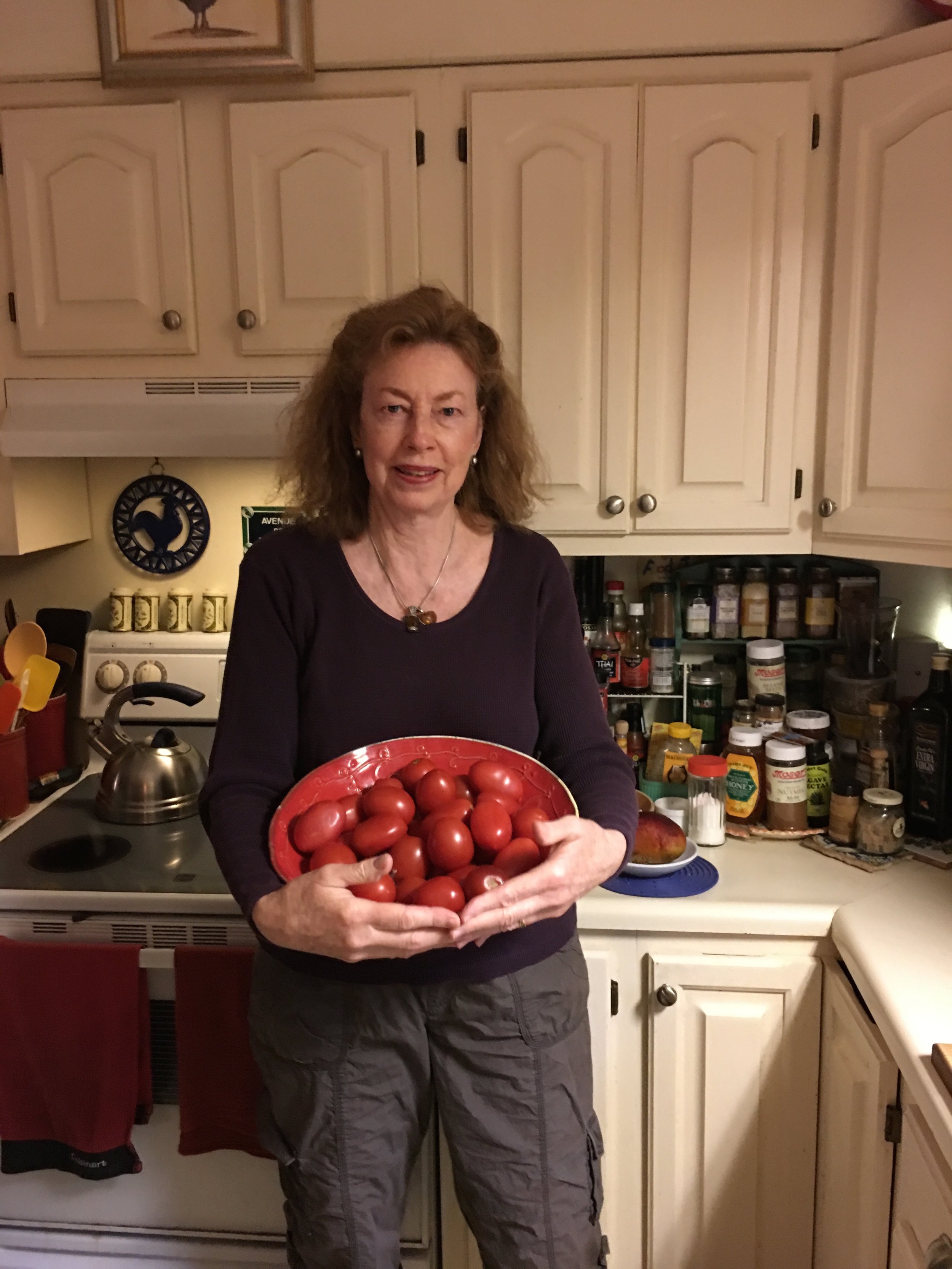Sweet Corn and Tomatoes
Imagine summer without corn and tomatoes. You can't, can you? That would be like thinking about French cuisine without chocolate and vanilla, Irish food without potatoes, or Italian sauces without tomatoes. In the American Heartland corn and tomatoes are as essential an ingredient in the recipe for summer as capsicum pepper is to an Indian curry or paprika is to Hungarian goulash.
Look back five centuries to the time of Isabella when there was no chocolate or vanilla in France, no capsicum (chile) pepper in India, no paprika in Hungary, and believe it or not, not a single tomato had ever been seen in an Italian cuccinaor trattoria. Five hundred years ago, these foods—along with potatoes, many kinds of beans, squashes and pumpkins, turkey, pineapple, wild rice, peanuts, and pecans—were only found in the New World. Each of these foods had its own unique history.
In the years following the "discovery" of the New World, native foods were shared, borrowed, transported great distances across vast oceans, and changed in different ways depending on the shore to which each was transported. In subsequent years, each found its way into the cuisine of its adopted homeland in Europe, Asia, Africa, the Middle East, and the Mediterranean where they continued to be refined and cultivated.
After centuries of immigration to the Americas, the journey of these native foods has come full circle. Gradually, there has been a fusion of flavors from the Old World with the traditional diet of the Heartland. With time, we deem this melting pot of tastes—from french fries and ketchup, to pizza and Cornflakes—as uniquely American as apple pie, until we are reminded that apple pie originated in England.
Award-winning cookbook author, host, and executive producer Padma Lakshmi’s popular Hulu series “Taste the Nation” takes viewers on a culinary adventure across American soil, exploring the richness and diverse communities who have so heavily shaped what American food is today. “Some of my fondest memories from childhood are of cooking with the women in my family,” writes Lakshmi. Her children’s picture book Tomatoes For Neela (illustrated by Caldecott Honor-winning illustrator Juana Martinez-Neal) was inspired by her own immigrant background. By the way, Lakshmi’s favorite kind of tomato is a San Marzano.
In the Midwest, corn marks the progress of summer's calendar. In the weeks before the September harvest, a farmer will stop in the early evening on his way home from the fields to pull off an ear of corn, shuck the husk, and study the rows that have grown within. With a slow and careful eye, the farmer reads his future like a fortune teller reads the palm of a hand. Tassels start to appear by July. By mid-July, sweet corn and fat, juicy tomatoes from backyard gardens find their way to the table just about every meal.
With a good harvest of your own tomatoes comes the challenge of how to prepare them beyond the normal salad or sandwich options. Because much of what I prepare in our kitchen is Italian in spirit and flavor, I often use sun-dried tomatoes packed in virgin olive oil and add fresh basil when I’m preparing a pasta dish. The drying process for the tomatoes is easy—
Sundried Tomatoes
Directions:
Put tin foil on a cookie sheet.
Slice plum or Roma tomatoes and arrange them face up on the cookie sheet.
Sprinkle the tomatoes with Kosher salt and "dry" them in a very slow oven (200°) overnight for approximately 12 hours.
When the tomatoes look dry, pack them in a sterilized jar, add several fresh basil leaves, and cover them with virgin olive oil. Seal the jar and store the sun-filled treasures in your pantry.
The combinations and possibilities for preparing corn and tomatoes are endless. They taste their sweetest and finest on the palette when fresh and served without fuss. NYTimes Cooking editor Sam Sifton suggests not cooking them at all. For some, the taste of summer is a tomato and mayonnaise sandwich. I prefer a plate of thickly sliced tomatoes accompanied by buttered sweet corn, a pinch of salt and a slice of Italian focaccia bread to sop up any leftover buttery juices.
Speaking of corn, I recently added chef and restauranteur David Tanis’s cookbook Corn: A Country Garden Cookbook(1995) to my kitchen library. This beautifully illustrated book shows corn to be much more than an indispensable staple. From corn on the cob to corn chowder to posole, corn figures prominently in menus around the world.
Come winter, we’ll continue to enjoy the flavors of summer in soups and jars of pesto created and preserved while the harvest is plentiful. And we’ll remember for a lifetime the sweet taste of fresh corn and tomatoes. Plain and simply delicious.





